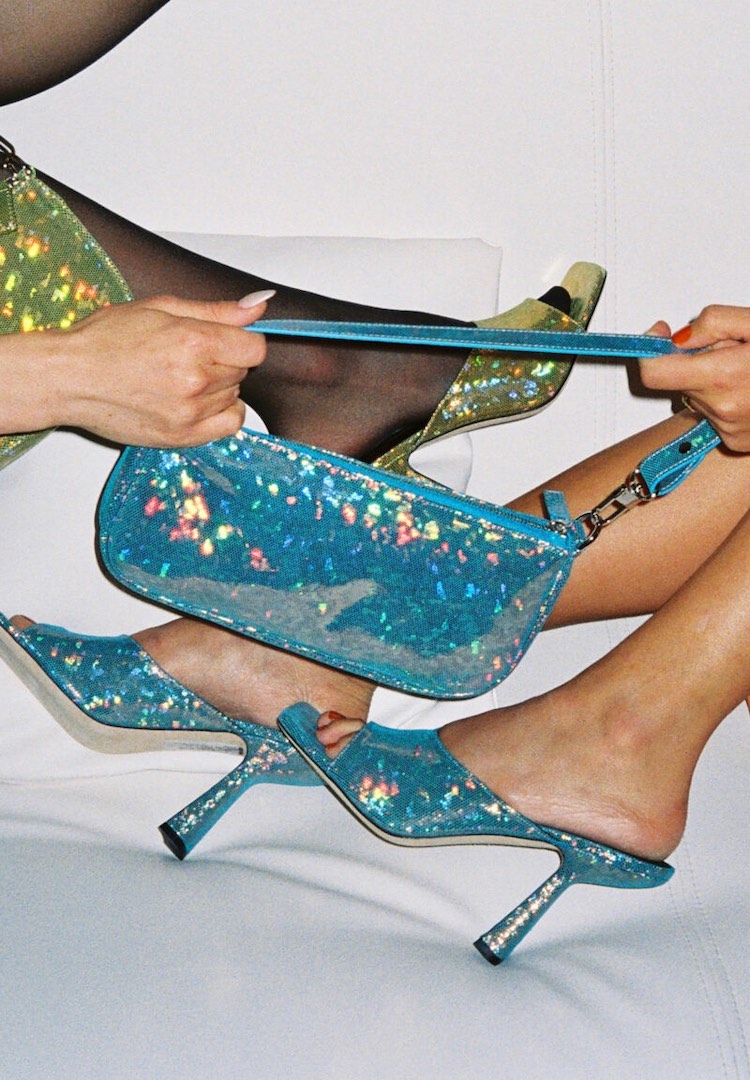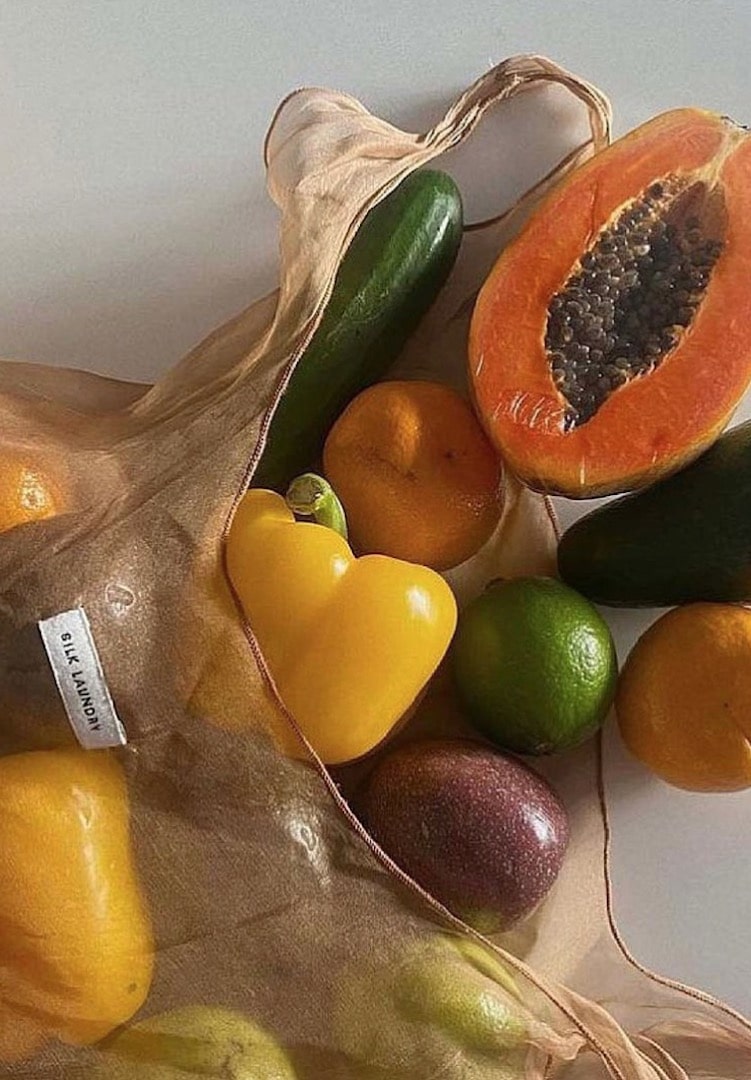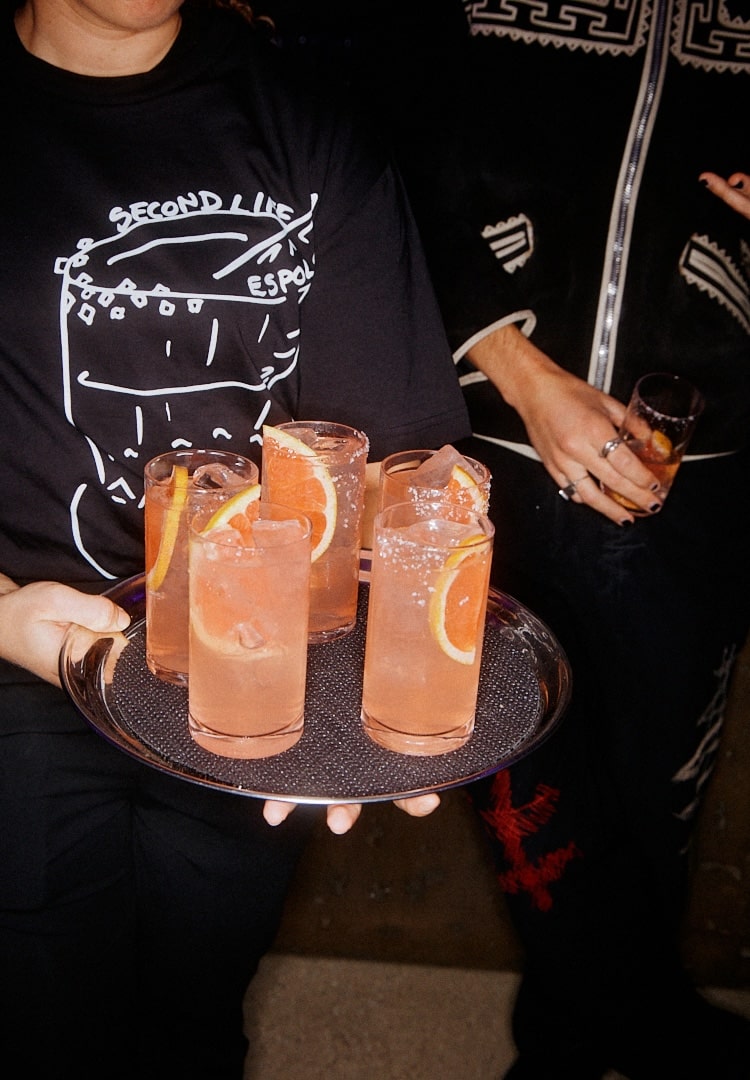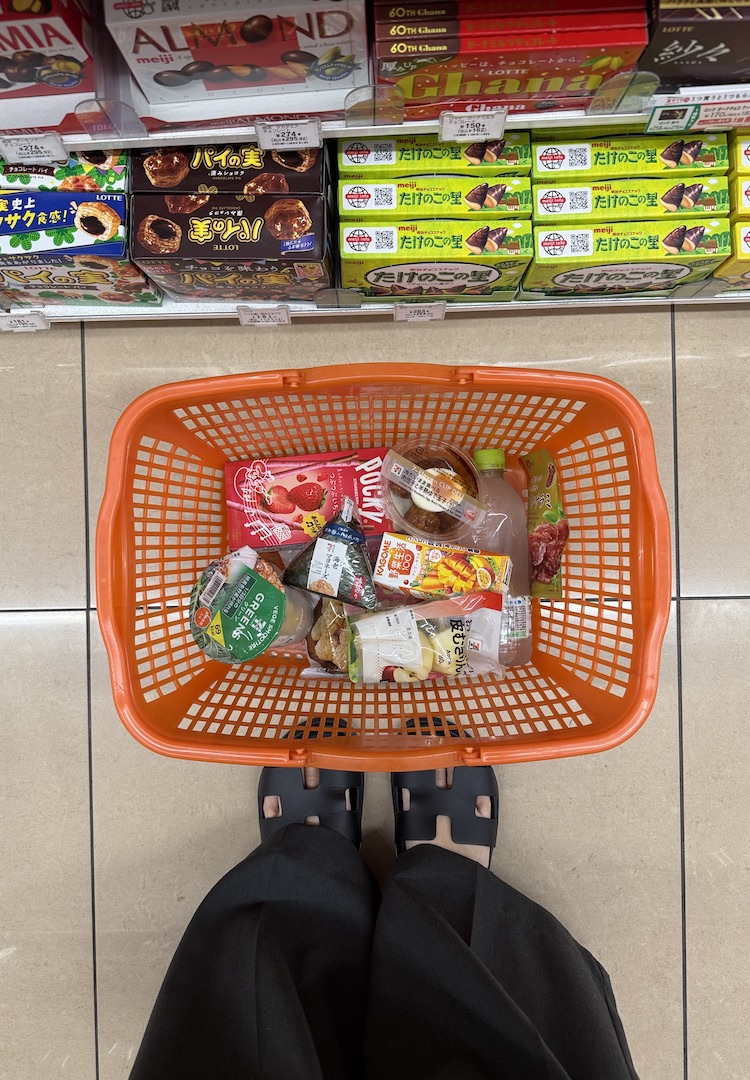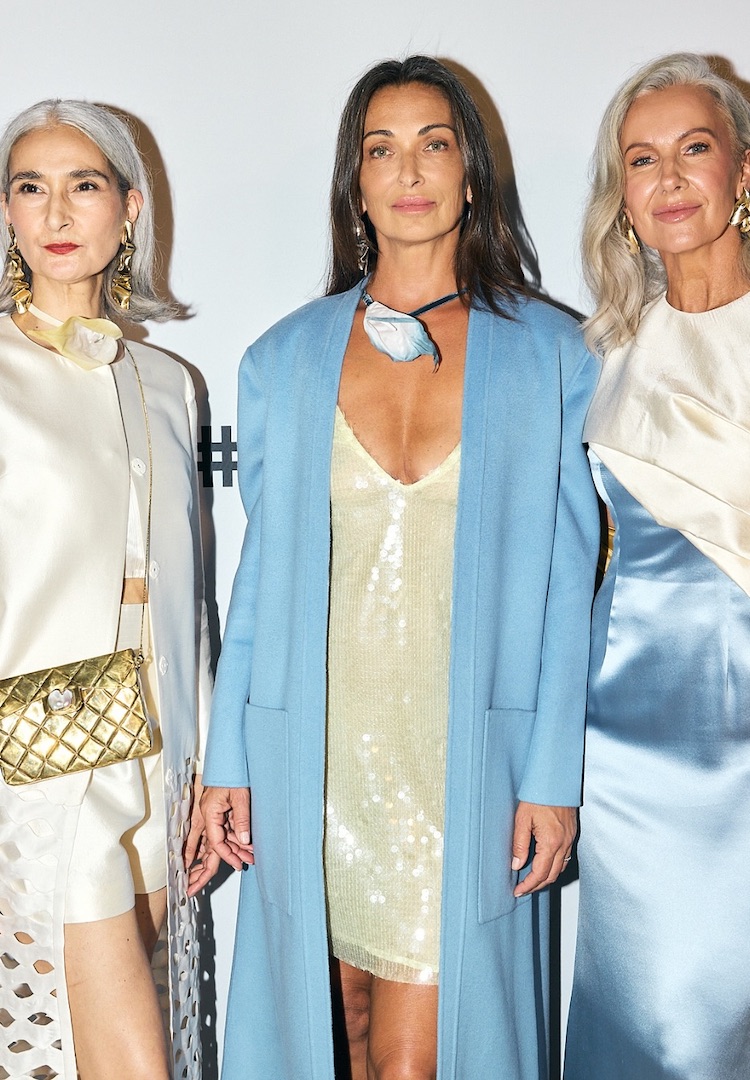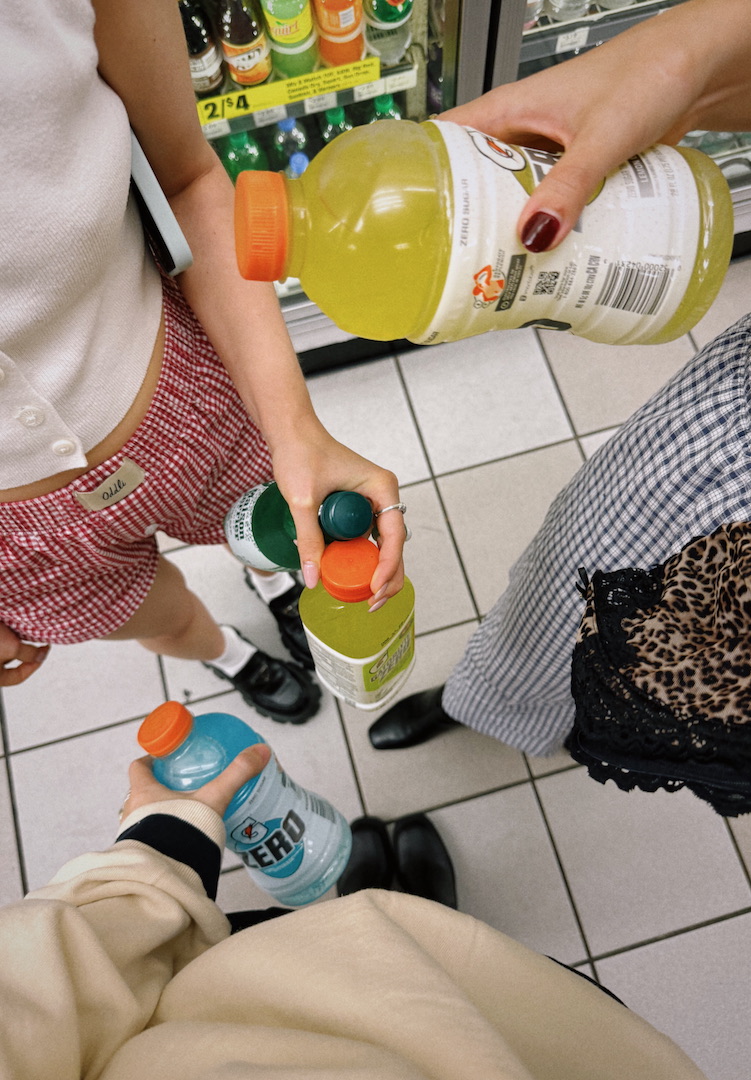Isn’t it about time we celebrated the party girl?
IMAGE VIA BY FAR
WORDS BY LAURA WOODS
“I think the party girl serves an important function in society. They flirt with the notion that ignoring the trimmings of adulthood can feel a lot like freedom.”
I’ve always had a penchant for party girls. I was a teen fascinated by Kate Moss and Edie Sedgewick. Later on, I fangirled over Cat Marnell and Elizabeth Wurtzel. I defended their demons as fuel for a life of spontaneity and excitement. I was not alone in this false interpretation.
Writers romanticised their struggles, employing literary devices to form a strong connection between the complex and the compelling. But hidden somewhere within the glamorised storytelling, they served as a cautionary tale of the perils of hard-partying. For the act of partying is one met with tongue-tuts and excused as a rite of passage or ‘phase’ that will come to an end eventually.
Looking for some similarly thought-provoking reads? Try our Life vertical.
I look back fondly at my own personal ‘party girl phase’, and the experience and adventure it spurred on. But I’m relieved that I’m not in it anymore. Not because I’m too tired or responsible. But because, after one too many obnoxious Instagram stories and oversharing my life with an unnecessary amount of strangers, I came to realise that the beer goggle effect does not apply to your life.
Sooner or later, a gap emerges between how party girls see themselves, and how others see them. The ability to magnetise the masses at midnight is not as respected, come sunrise. For there’s a certain shame attached to being a party girl, one that I’ve never quite understood but acknowledged nevertheless.
Australia’s need to rethink the drink
Australia has a ‘getting wasted’ culture, where drinking is about quantity, not quality. Around the world, in cities like Berlin and Barcelona and Amsterdam, club revellers are calm amongst the chaos. They exhibit athlete-like stamina, an active appreciation for the music and don’t overstep their libertarian privileges. Intoxication is the epilogue of an extended night, not the central plot.
But in Australia, to party properly is to be out of control. Distrust in the government infantilises the experience. Treated like trouble-makers, we’re served liquid in plastic cups, in over-policed venues, on designated ‘party strips’ that are a safe distance from settled neighbourhoods.
Urban planning supports the idea that partying brings out our deepest vices. Nightlife venues are nestled between sex shops and kebab shops to form a playground of ‘problematic’ hedonism. There’s no pride or sophistication in Australian drinking culture. In Berlin people party for self-expression, in New York for status. In Australia, we party to get smashed.
Do party girls belong in the past?
Somewhere in the mid-2000s, partying lost its cultural intrigue. Celebrity hotspots fell like dominoes. Studio 54, The Viper Room, Les Deux. We don’t have enigmatic muses like Edie, or elusive supermodels like Kate anymore. We’ve retired the idea – thankfully – that being broken is trendy.
Our ‘it girls’ – Em Rata, Kendall, Bella and the like – adamantly shut down any speculation of a party girl alter ego; a far cry from the days of Britney, Mischa, Nicole and Paris. And who could blame them? There’s no distinction between partying for pleasure and partying for pain in the public eye, and admissions of partying nearly always coincide with a confession of alcoholism or addiction.
The glorified but hyperbolic ‘live fast, die young’ mentality is also extinct. Portrayals of wasted youth were once revolutionary for their raw relatability (think Skins and Kids) but now serve as a graphic deterrent to such self-destruction (think Euphoria).
We’re no longer enchanted, or even interested, by those who misbehave. There’s no denying this is an important shift to shape our society for the better. The obsession with celebrity party culture turned exploitative, as tabloid media capitalised off the dazed and disorderly.
But there’s also no middle ground to how partying is examined in the mainstream. Society uses the strawman fallacy to warp innocent motivations of collective effervescence and temporary escapism into something more sinister. Something in need of sympathy and saving.
Hustle over hedonism
Personally, I found the ‘work hard play hard’ lifestyle to be easier said than done. A party lifestyle robbed me of all my ambition. Once recovered, my ambition robbed me of the ability to lose myself in the night. Each hour spent out was an hour detracted from tomorrow and three things shaved off a to-do list of life admin and upskilling.
I always admire the last ones standing, but I’m quick to presume – without any reasoning – that surely their professional life is in tatters. Brainwashed by the cult of productivity, we swapped blackouts for burnouts. Success was determined by our side-hustle count and savings account.
Those who had ‘made it’ revealed their secrets: sacrificing late nights and socialising. Hustle triumphed over hedonism. The ghosts of the dancefloor could be considered just as soulless as the corpses of the corporate world, but in girl boss culture, the latter reigned supreme.
Overworked and burnt out, the anti-hustle culture offered us a nice relief. Suddenly slowing down had nothing to do with laziness or lack of ambition. Calls for four day work weeks, mainstream marijuana use and quotes like “No days off is not a flex” did the social media rounds.
Being a party girl doesn’t have a place in either zeitgeist. In a culture of productivity, you’re ambitionless. In a culture of anti-productivity – where the couch is a source of contentment – you’re dangerously adrift; your search for ‘filler experiences’ blocking your path to Il Dolce Far Niente. English translation: realising the true bliss of just doing nothing.
The ageing party girl
Partying has an expiry date. At some point we announce we’re ‘too old’ for nightclubs, transition to bars then reach the pinnacle of adulthood: dinner parties and wine tasting. We joke about the utter fakeness of such ‘adulting’ but accept it as age-appropriate fun.
Experiences we know we’ll be just as suited to at 40, 50 and 70. We try to control the rollercoaster of chaos that is our 20s by finding fun at the bottom of a wine taster sample rather than a shot glass. We feel like imposters as we succumb to the implied archetype of ‘being mature’ long before psychologically maturing.
Anything to avoid being a real-life embodiment of Hollywood’s party girl caricature – Robin in How To Be Single, Amy in Trainwreck, Annie in Bridesmaids – who are either jobless, loveless or passionless. There is a subtle ‘us’ versus ‘them’ divide between those who have retired from the party lifestyle and those who have not.
Many of us presume there’s a deeper complexity that drives a Peter Pan carbon copy to resist the best-before date of such debauchery. Personally, I think the party girl serves an important function in society. They flirt with the notion that ignoring the trimmings of adulthood can feel a lot like freedom.
Party girls send a message that we still have more living to do, we still have more time, before morphing into a watered-down version of our parents. That life milestones don’t have a timeline. Despite my party girl phase being on a hiatus, I salute those who refuse to surrender the night. For not everyone is wired to discover that true happiness lies in Netflix, sweatpants and takeaways.
Laura Woods is the founder of Bad Habkits, a line of curated kits created for the party animal in everyone’s life.


